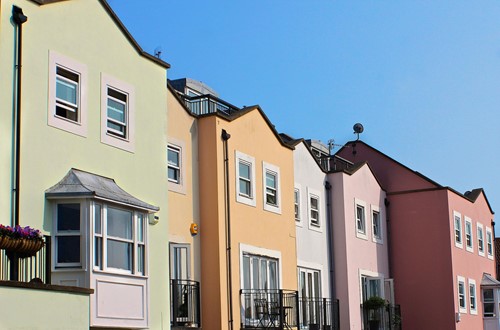
A common sight in historic metropolitan areas, row houses are an iconic example of multifamily housing structures. As their name suggests, row houses are oriented next to one another “in a row” and without a space in between. Each home is separate from the others, but the structure or building often shares a homeowners’ association or similar governing body.
Along with these key factors, there are plenty of characteristics that make row houses special.
Row houses can typically be identified by the following features:
In addition to aesthetic and structural elements, row houses often line entire streets or city blocks. In the United States, you’re likely to find row house neighborhoods in major urban centers with prominent historic districts, such as San Francisco, New York City, Boston and Baltimore.
While following the characteristics listed above, row house construction also falls into some basic architectural style categories. The main architectural styles of row houses include:
Row houses are popular among many homeowners for their historical significance and unique architectural features. Many cities strive to maintain the integrity and appearance of row houses, so residents can continue to enjoy their aesthetic and charm for decades to come.

In twenty five years of real estate sales and marketing experience, I have sold hundreds of properties, while developing detailed knowledge of Sonoma & Napa area communities. I am a life-long resident in the North Bay and after a full day at work, I enjoy spending time with my four children, and participating in their many school and recreational activities.
Over the years, my clients have expressed diverse plans and dreams. I seek to truly understand and appreciate my clients' goals, focusing my efforts on realizing them. It has been fun learning more about the unique opportunities that attract people to the area such as the culinary community, the viticulture and wine industry as well as outdoor adventure tourism. It is important to me to listen to my clients, do what it takes to serve their needs and I am dedicated to treating everyone involved in a transaction both in a personal and professional manner. I work hard to anticipate and respond to the routine tasks at hand as well as the complex challenges that come up during real estate transactions while ensuring my goal to deliver you the outcome you desire.